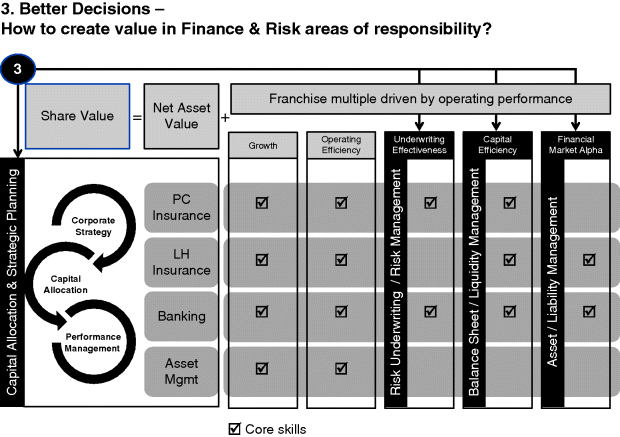Chapter 15Balance Sheet Management
As illustrated in Figure 15.1, CFOs and CROs can significantly influence the value of their firm through three balance sheet management activities.
- First, through asset/liability management, managing the structural mismatch position resulting from core banking and insurance activities through improved product design, investment policy and capital markets transactions.
- Second, through cash and liquidity management, ensuring that all cash and funding requirements can be met even under stressed market conditions.
- Third, by managing the capital and debt funding structure, finding the optimum balance between different forms of equity and debt to secure the lowest-cost, most resilient funding structure within the constraints imposed by regulators and rating agencies.

Figure 15.1 How to create value in the finance and risk areas of responsibility
Balance Sheet Management Activities
Although introduced separately, these three activities are in fact integrally linked to one another, to the strategy of the company and to its capital budget. As such, they need to be managed in an integrated and coordinated fashion. The firm's ALCO, treasury and risk functions play a key role in managing and coordinating these activities.
Asset/Liability Management
Paradoxically, the largest financial market risk positions for most commercial and retail banks are not ...
Get Value and Capital Management: A Handbook for the Finance and Risk Functions of Financial Institutions now with the O’Reilly learning platform.
O’Reilly members experience books, live events, courses curated by job role, and more from O’Reilly and nearly 200 top publishers.

